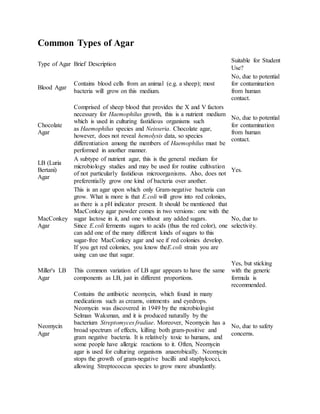Agar is a polymer extracted from red algae that is used to solidify culture media for growing bacteria. It is preferred over gelatin for culturing bacteria because bacteria cannot degrade agar. Agar forms a stiff gel at room temperature and remains solid up to 65°C, making it suitable for growing bacteria. Common types of agar include nutrient agar, which supports growth of many bacteria types, and LB agar, which is recommended for student use as it does not preferentially grow pathogenic bacteria. Proper preparation and handling of agar plates is required for safe experimentation.








